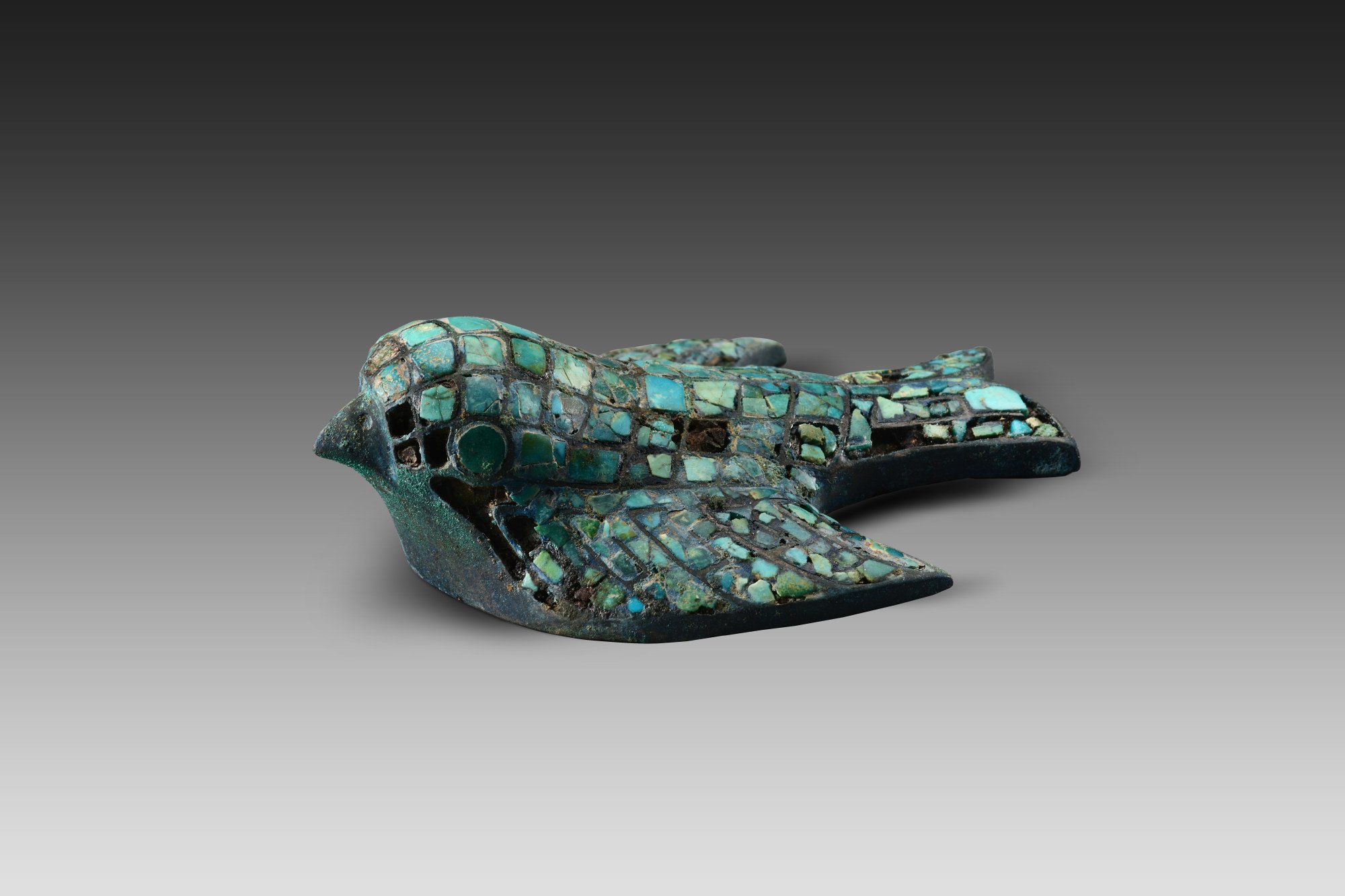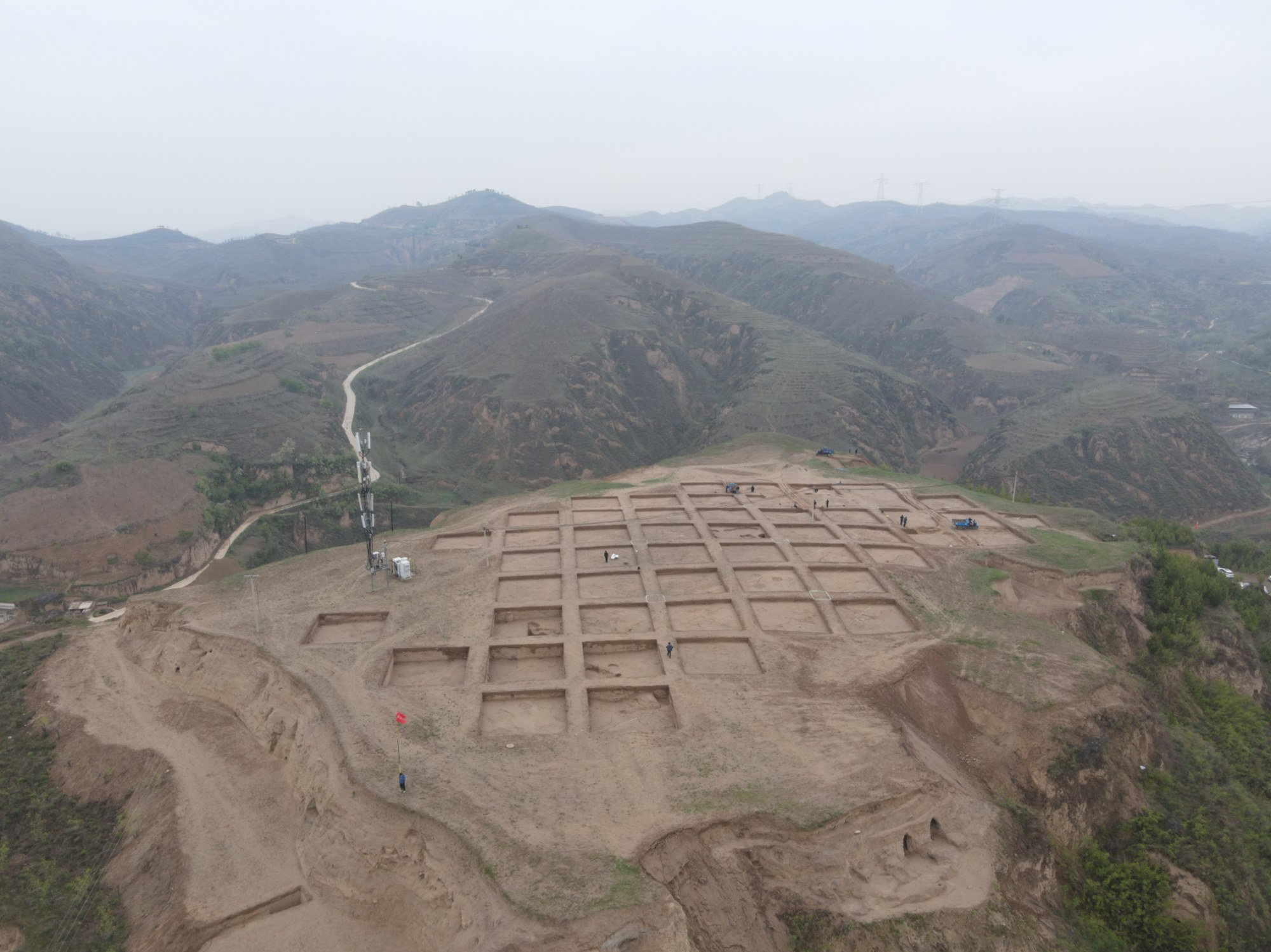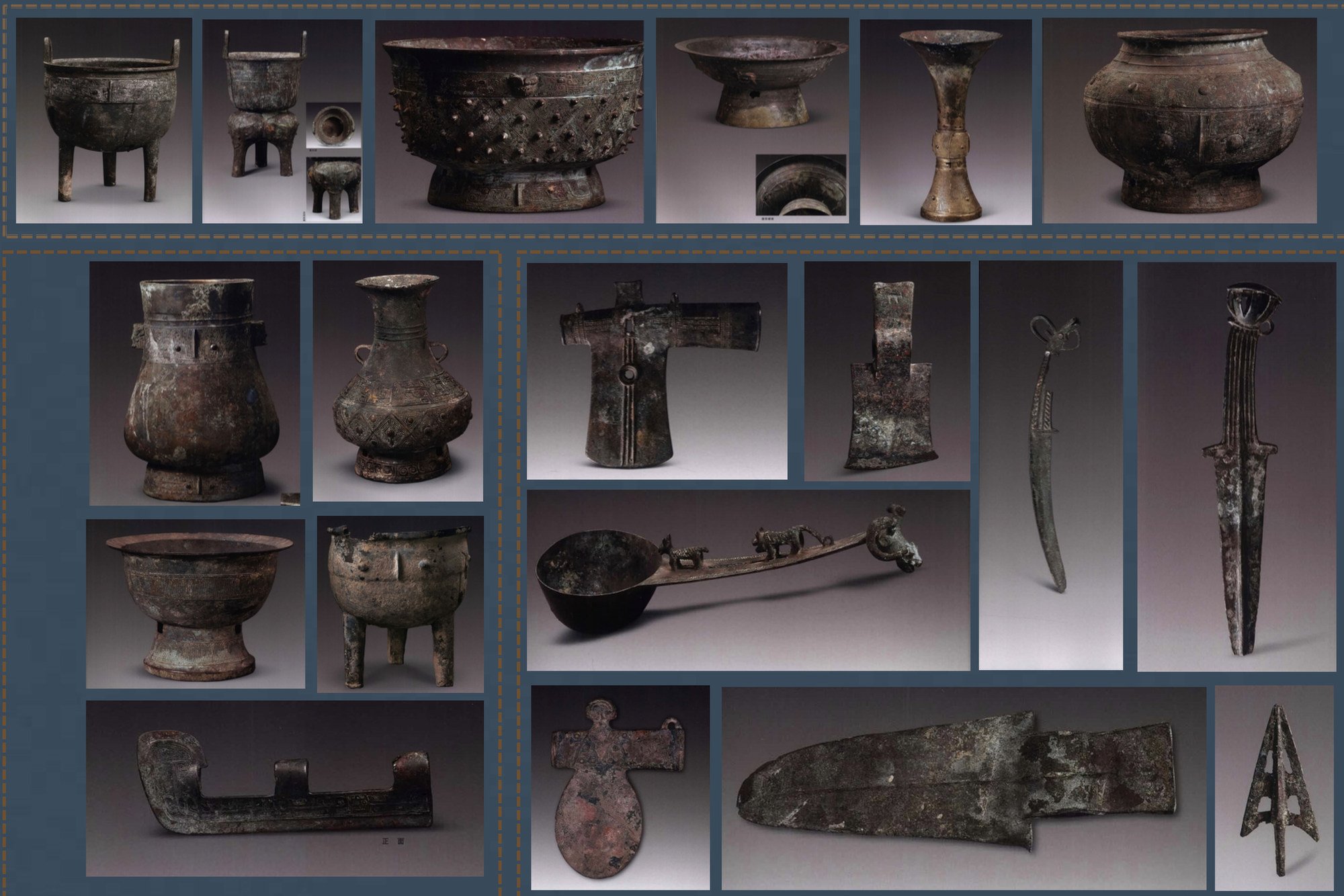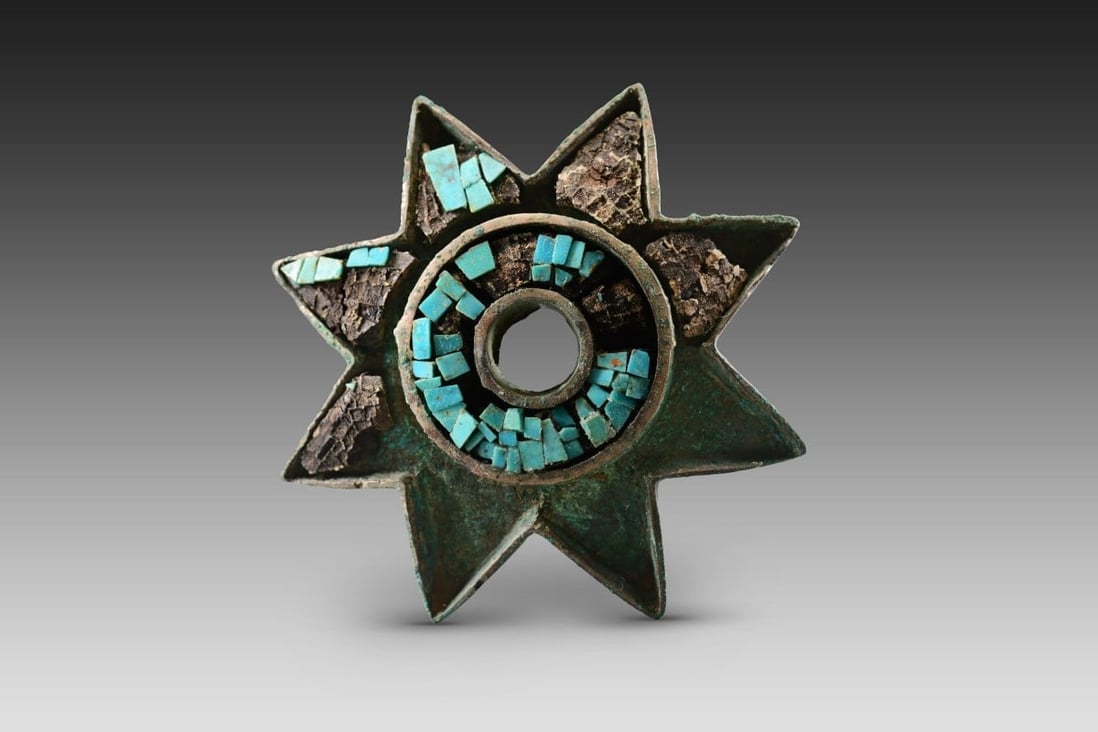The sites belonging to the ancient Shang dynasty (1600BC-1046 BC) were recently discovered in the capital Beijing, its adjacent Hebei province, as well as the northwestern Shaanxi and central Henan provinces, according to China’s National Cultural Heritage Administration.
The discoveries from the sites paint a valuable picture of city construction, social systems, burial etiquette and handicraft production of what is regarded as the second Chinese dynasty, the administration said in a statement on Tuesday. The Bronze Age dynasty is also the first Chinese royal line backed by historical evidence.
Large rammed earth buildings were found at one of the sites. Photo: National Cultural Heritage Administration
Among the finds were nine tombs of high-ranking nobility from the late Shang dynasty, the largest burial site of its kind ever unearthed in northern Shaanxi. These were found in the Zhaigou site situated on 11 hills featuring large rammed earth buildings, cemeteries and bronze-casting shops.
More than 200 burial objects were recovered from the tombs, including a set of accessories placed on chariots and horses, copper axes, sea shells, jade and crocodile bone. Researchers said the tombs offered insights into the political structure of the Shang dynasty and interactions between the Shang and northern cultures.

A turquoise-inlaid ornament unearthed from the Zhaigou site. Photo: Xinhua
At the Xingong ruins in Beijing, one of the earliest Bronze Age settlements discovered in the capital, archaeologists found tombs laid out in order and facing in the same direction, suggesting a form of town planning. Some of the tombs also held burial objects such as painted pottery, jade and gold earrings, turquoise necklaces and red agate beads, reflecting the high social status of those buried.
Researchers said the findings could shed light on Bronze Age cultural exchanges between people living in the Yan Mountains area of Beijing and the northern grasslands. Some remarkable urban planning findings related to the Huanbei Shang site in Henan, once a capital city of the mid-Shang dynasty that was first discovered in 1999.
Archaeologists studying the area over the past two years found that a part of the city was surrounded by ditches, instead of rammed earth walls as previously thought. They also found clues pointing to potential passageways and bridges to access the city. The findings could change the understanding of ancient urban layouts, researchers said, as they indicated walls were not seen as the only way to protect a city.
The fourth site, near Handan in southern Hebei province, used to be a key military location during the Shang dynasty. The medium-sized settlement relating to the late Shang and subsequent Zhou dynasty was found to contain burial areas, roads, moats, pottery kilns, stone waterways and rows of houses.
Ancient artefacts recovered included painted pottery, and copper arrowheads and axes. Photo: National Cultural Heritage Administration
In one of the houses, researchers found an indoor structure for heat circulation, which could be an early form of the Chinese kang, an ancient system of using a heated platform to keep homes warm over the long northern winter.
Image on top : A Shang-era copper ornament with turquoise inlay unearthed from the Zhaigou site in Shaanxi province, China. Photo: Shaanxi Academy of Archaeology




